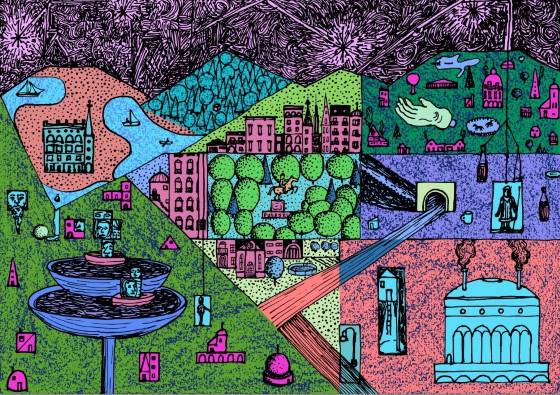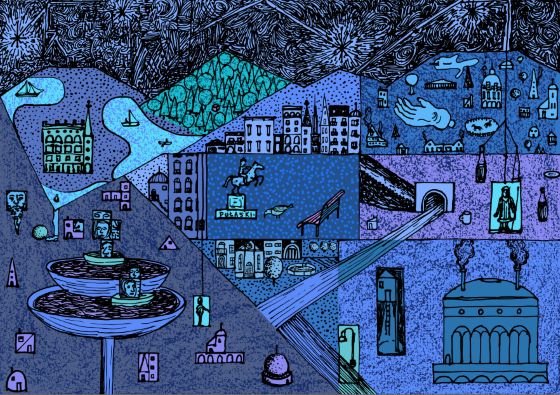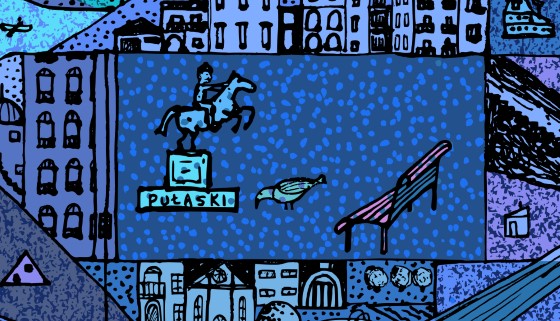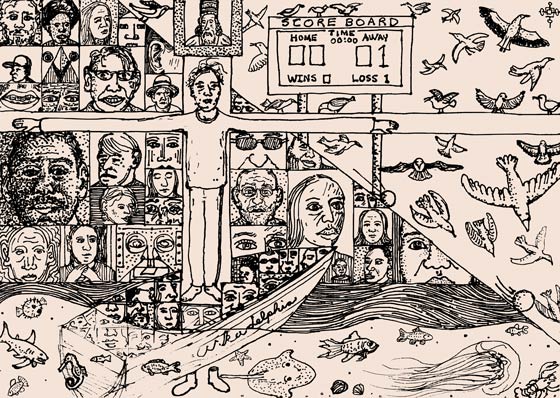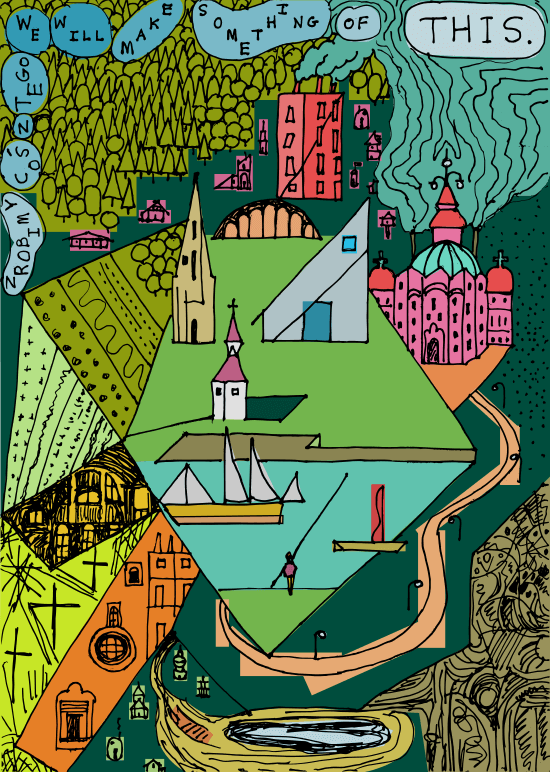
As I understand, the concept of synchronicity provides a meaningful explanation for how unconnected events can be joined to form a more significant union of meaning. This idea brings seemingly chance actions into a concert of relatable events. If small decisions have power to shape our path in remarkable ways, then it can feel as if spirits are at work. Similarly the creation of art can feel miraculous. When arranging visual elements that may not seem connected, often a transformation occurs revealing a greater story. The sum becomes bigger than the parts. When making the picture above, people, creatures of the sea and sky came together one by one. However, a vision of the whole is realized only as the page is filled.
Since I was a child, I have been fascinated with how a picture comes together. Though my knowledge was limited. I recognized that if commitment was given to an image something special could happen. The question always remained how and what to do next. In 2003, as an adult, I visited Belgium and the Netherlands and saw work by Rogier van der Weyden and Jan van Eyck and realized I would never meet the measure of their discipline. However, I also understood that I live in a different time an seek a different measure of success. While precision to paint with a single hair brush is not necessary, I continue to feel that spending time to develop a picture is important. It means that time is given to observe and be discerning enough to make decisions that transforms a whim into something more solid and imbedded with intent.

Big Pictures In the Modern World
As an art student I noticed that students, professors, and guest lecturers had a way of summing up art from a decade in a condensed way. For example art of the 1950’s might be described as formal abstraction, 1960’s pop art, 1970’s minimalism, 1980’s neo-expressionism. Although these are simplifications, one can feel the shift that occurs in a particular time. In the 1990’s I noticed the emergence of large scale photographs.
I was particularly awe struck by seeing photographs by Andreas Gursky. I remember a large photograph of a football field from above and noticed how one had a sense of the whole field but also could feel the presence of the grass on the field. Likewise, a landscape containing a river would reveal a fisherman on the bank of the river. Compared to the landscape, the the fisherman was small. However, because of the scale of the image, I could more closely identify with the figure and even imagine the fisherman being hungry. This was new and more powerful than anything I could see in a painting at that time. While it is impossible to reproduce the scale and detail on a small screen, an installation view allows for a relational sense of the photograph in a space.
From Here to There
In science, often with great work and time, one advancement leads to another. The idea of progression is engrained in much of what we do. However, its insertion into art can be problematic. Art runs parallel to technology barrowing from innovations (e.g. the development of new materials, colors, or mediums such as video and digital production). In this sense art may come to look new. However, if art is characterized by the act of making something, then the act is more repetitive than innovative. Despite the fact that a base process may remain the same, art becomes charged with meaning because it is bound to a context that includes history, environment, and cultural studies. Interest may wax and wane. Some art is lost or overshadowed and later resurfaces with renewed interest. An example would be the work of Janet Sobel whose paintings predate Jackson Pollock’s drip paintings but are strikingly similar. In this sense re-evaluation can make the past seem very much alive in the present. Art is a vehicle, vessel, or prompt to re-evaluate time and place.

Finish Line
I once trained for a 5k race. I did so because I never ran more than a mile. It was a worthwhile experience. I challenged myself to run greater distances and felt the accomplishment of reaching a goal. However, I stopped. I can not say when or why. Some endings can be abrupt, long, or gradual. However, as we stretch for something to achieve, ultimately the end arrives on its own terms. Circling back to the first image above, someone asked me if the central figure in the image was Jesus. I don’t think so, but he is stretching, there is a connection, and an ending.

